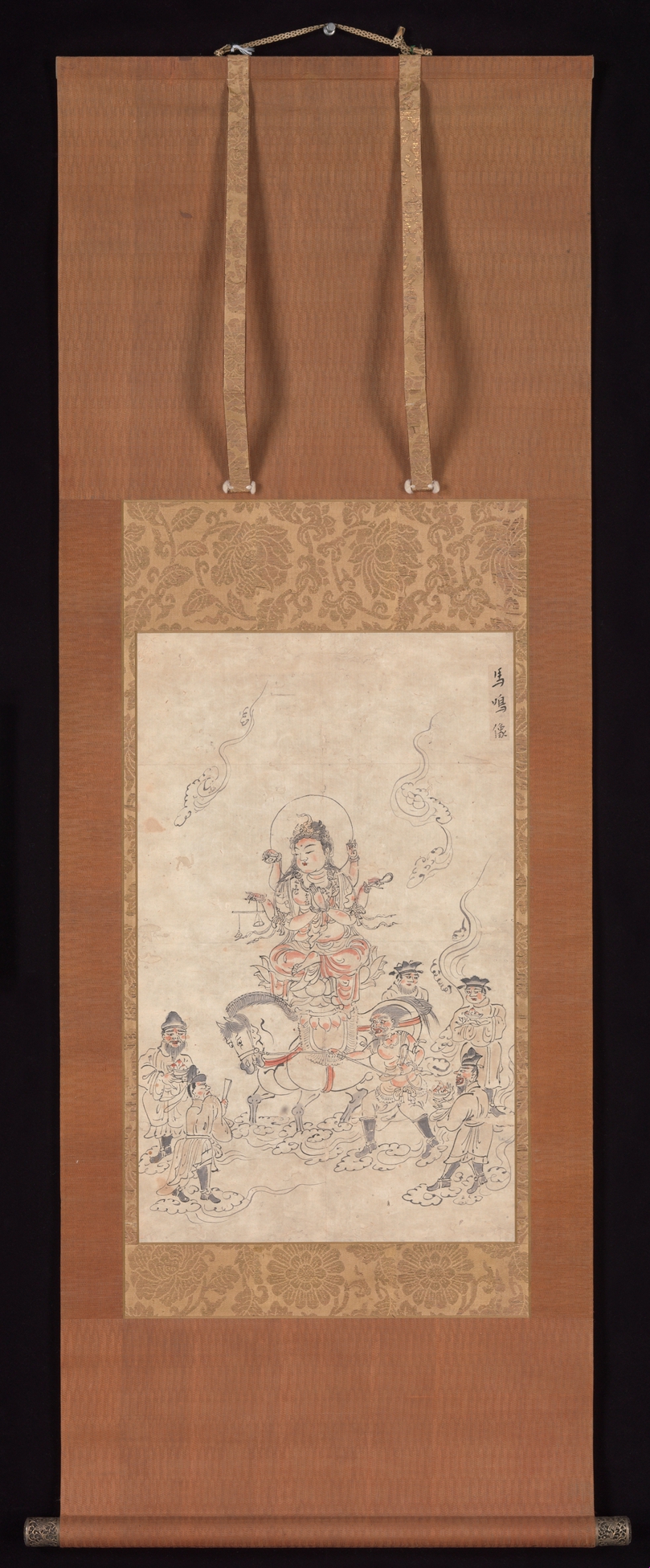Iconographic Drawing of the Bodhisattva Memyō (Ashvaghosha)
Not on view
This iconographic drawing represents Memyo Bosatsu, a deity of sericulture who provides the poor with clothes. The bodhisattva is thought to have originally been a deity indigenous to Chinese popular cults that was incorporated into Esoteric Buddhist iconography. Atop a lotus pedestal on a white horse, which in turn hovers on clouds, the bodhisattva faces leftward. Multiple arms hold such attributes as a reel, a bunch of thread, and a beam balance, while his hands are folded in a worshipping gesture. Usually he is accompanied by three female attendants bearing offerings associated with sericulture, but this painting illustrates only male figures. Moreover, some differences from the general iconographical features of Memyo Bosatsu, such as the hands in a gesture of worship and the full lotus position of the legs, make this a somewhat rare representation. The tight composition of the figures, shaded in red, the flying clouds, as well as the vividness and strength of the brushwork suggest not an iconographical exercise by a monk but a preliminary Buddhist painting made by a professional artist.
This image cannot be enlarged, viewed at full screen, or downloaded.
This artwork is meant to be viewed from right to left. Scroll left to view more.



